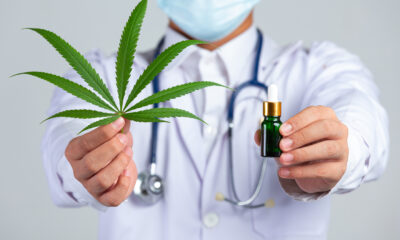The human body is a complex system, and within it, the kidney plays a vital role in maintaining homeostasis. These small, bean-shaped organs perform a variety of essential functions that are crucial for overall health and survival. In this article, we will explore the anatomy, functions, disorders, and importance of kidneys in human health.
Anatomy of the Kidney
Basic Structure
The kidneys are two bean-shaped organs located on either side of the spine, just below the rib cage. They are about the size of a fist, measuring roughly 4 to 5 inches long. Each kidney is surrounded by a layer of fat that acts as protection from trauma and external pressure.
The kidney is divided into two main regions: the outer cortex and the inner medulla. The cortex contains the majority of the nephrons, which are the functional units of the kidney. The medulla, on the other hand, is organized into pyramid-like structures that help transport urine into the collecting system.
Nephron: The Functional Unit
Each kidney contains approximately one million nephrons, which are microscopic filtering units. A nephron consists of two primary parts: the glomerulus and the tubule. The glomerulus is a tiny blood vessel cluster where filtration begins, and the tubule is a long, coiled tube that processes the filtrate to form urine. The nephron is crucial for filtering waste, regulating blood volume, and maintaining electrolyte balance.
Functions of the Kidney
The kidneys are remarkable organs, performing multiple functions that are vital to maintaining health. Their primary function is to filter blood, removing waste products and excess fluids to form urine. However, their role extends beyond waste removal.
1. Filtration and Waste Removal
One of the most well-known functions of the kidney is to filter blood. Every day, the kidneys process around 200 liters of blood, filtering out toxins, metabolic waste products, and excess substances. These unwanted materials are excreted in the urine, which the kidneys produce at a rate of about 1 to 2 liters per day.
Waste products filtered by the kidneys include urea (produced from protein metabolism), creatinine (a byproduct of muscle breakdown), and various toxins. The filtration process takes place in the glomeruli, where blood pressure forces water and small molecules out of the blood and into the kidney tubules. Larger molecules, like proteins and blood cells, are retained in the bloodstream.
2. Regulation of Fluid and Electrolyte Balance
The kidneys play a critical role in maintaining fluid balance in the body. They ensure that the body retains the right amount of water, excreting any excess through urine. This is important because the balance of fluids affects blood pressure, heart function, and overall cellular health.
In addition to regulating fluid levels, the kidneys maintain a balance of electrolytes, including sodium, potassium, calcium, and magnesium. These electrolytes are essential for various bodily functions, such as nerve signaling, muscle contraction, and maintaining acid-base balance.
3. Blood Pressure Regulation
The kidneys are intricately involved in regulating blood pressure through the renin-angiotensin-aldosterone system (RAAS). When blood pressure drops, the kidneys release an enzyme called renin, which triggers a series of reactions that result in the narrowing of blood vessels and an increase in blood pressure. The kidneys also regulate blood volume by adjusting the amount of fluid excreted, which further affects blood pressure levels.
4. Erythropoiesis: Stimulating Red Blood Cell Production
The kidneys are responsible for producing and secreting a hormone called erythropoietin. This hormone signals the bone marrow to increase the production of red blood cells when oxygen levels in the blood are low. This process, known as erythropoiesis, ensures that the body has enough red blood cells to transport oxygen to tissues and organs.
5. Detoxification and Drug Metabolism
While the liver is the primary organ responsible for detoxifying harmful substances, the kidneys also play a significant role in removing drugs, toxins, and other foreign substances from the blood. After filtering these substances, the kidneys help break them down and eliminate them through urine. This process is vital for preventing the buildup of harmful materials in the body.
Kidney Disorders and Diseases
Given the crucial functions they perform, any impairment of the kidneys can have serious health consequences. Several diseases and disorders can affect kidney function.
1. Chronic Kidney Disease (CKD)
Chronic Kidney Disease is a long-term condition in which the kidneys gradually lose their ability to function properly. The most common causes of CKD are diabetes and high blood pressure. Over time, CKD can progress to kidney failure, at which point dialysis or a kidney transplant is required for survival.
2. Acute Kidney Injury (AKI)
Acute Kidney Injury is a sudden loss of kidney function, usually caused by conditions such as severe dehydration, infection, or the use of certain medications. Unlike CKD, AKI is often reversible if treated promptly, though it can sometimes lead to permanent damage.
3. Kidney Stones
Kidney stones are hard deposits of minerals and salts that form in the kidneys. They can cause severe pain and urinary problems if they obstruct the flow of urine . Dehydration, high salt intake, and certain metabolic disorders increase the risk of developing kidney stones.
4. Polycystic Kidney Disease (PKD)
Polycystic Kidney Disease is a genetic disorder that causes numerous cysts to form in the kidneys. These cysts can interfere with kidney function and lead to kidney failure over time. There is currently no cure for PKD, but treatment can help manage symptoms and slow disease progression.
5. Glomerulonephritis
Glomerulonephritis is an inflammation of the glomeruli, which are the tiny filtering units in the kidneys. It can be caused by infections, autoimmune diseases, or certain medications. If left untreated, glomerulonephritis can lead to kidney damage and reduced kidney function.
Maintaining Kidney Health
Given the importance of the kidneys, it is essential to take proactive steps to protect them. Here are a few ways to maintain kidney health:
1. Stay Hydrated
Adequate hydration is essential for proper kid-ney function. Drinking enough water helps the kidneys remove waste and prevents the formation of kidney stones. Aim for 8 to 10 glasses of water per day, though individual needs may vary based on activity level, climate, and health status.
2. Manage Blood Pressure and Blood Sugar
High blood pressure and diabetes are the leading causes of kid-ney disease. Regularly monitoring and managing these conditions through a healthy diet, exercise, and medications (if prescribed) can help reduce the risk of kidn-ey damage.
3. Limit Salt and Protein Intake
Excessive salt and protein in the diet can strain the kidneys and increase the risk of kidney disease. A balanced diet that limits processed foods, red meat, and high-sodium snacks can help maintain healthy kidney function.
4. Avoid Overuse of Painkillers
Over-the-counter pain medications, especially nonsteroidal anti-inflammatory drugs (NSAIDs) like ibuprofen, can cause kidney damage when used excessively. Always follow dosing instructions and avoid prolonged use of these medications.
Conclusion
The kidneys are indispensable organs that perform a wide range of functions essential for survival. From filtering waste and regulating fluid balance to controlling blood pressure and stimulating red blood cell production, the kidneys are critical to maintaining overall health. Taking steps to protect kidney function—such as staying hydrated, managing blood pressure, and maintaining a healthy diet—can help prevent kidney disease and ensure long-term well-being.


 Health6 months ago
Health6 months ago
 Business6 months ago
Business6 months ago
 Culture7 months ago
Culture7 months ago
 entertainment7 months ago
entertainment7 months ago
 entertainment7 months ago
entertainment7 months ago
 entertainment7 months ago
entertainment7 months ago
 Tech7 months ago
Tech7 months ago
 Other8 months ago
Other8 months ago












